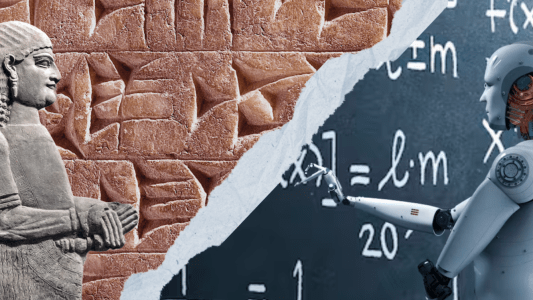This article is an installment of Future Explored, a weekly guide to world-changing technology. You can get stories like this one straight to your inbox every Thursday morning by subscribing here.
A synthetic human is being built in Poland — one body part at a time.
The machine is the work of Clone Robotics (formerly Automaton Robotics), a startup with the lofty goal of creating low-cost humanoids that can do all the jobs people don’t want — from cleaning our homes to working assembly lines in factories.
Clone believes the key to getting there is making the machines as physically human-like as possible, and as the first step along that path, the company is tackling arguably the hardest part of the human body to replicate: our hands.
The Clone Hand
In February, Clone unveiled the 18th version of a synthetic hand it has been developing for 8 years. Like a human hand, it contains bones, ligaments, and muscles — albeit artificial ones. Also like a human hand, it has 27 degrees of freedom, which allows it to move in remarkably life-like ways.
The bones are molded from carbon fiber, which Clone says is strong but can be manufactured cheaply. The rest of the hand is made of soft materials, including its 37 muscles, which are controlled via a hydraulics system.
These muscles can currently survive 650,000 expand and contract cycles, and the fingers are strong enough to grip and hold up to about 15 pounds. The most impressive thing about the hand, though, may be the price: Clone says the hand costs less than $2,800 in materials to make.
Clone has raised more than $640,000 from investors, including Y Combinator co-founder Trevor Blackwell, and a crowdfunding campaign launched on February 25.
The startup says 16 advanced AI labs have already pre-ordered its humanoid hand — it plans to ship version 20 starting in 2023 — and it is already developing its next body part: a humanoid torso.
The torso will feature a rigid spine, movable neck, two arms with hands, and 124 muscles. The plan is to put the whole thing on top of an off-the-shelf movable platform, and Clone says it already has 116 pre-orders, with customers ranging from bakeries to lawn care companies.
Clone has been developing an “adaptive brain” for its humanoids that lets them learn new tasks by watching videos of humans doing them. As of 2022, it says it can retrain bots “in minutes,” and the ultimate goal is for them to be able to learn how to do anything from just one demo.
Beyond Clone
There’s no word on when Clone anticipates developing a bottom half to go along with its robotic arms and torso, but dozens of other companies are building their own humanoids — including a few capable of clomping around on their own two legs.
Boston Dynamics’ Atlas
Boston Dynamics hydraulically powered humanoid Atlas doesn’t have any hands, but it does have a pair of legs on which it can run, leap, and even dance. The bot is designed to serve as a research platform — you can’t buy it — but in January 2023, Boston Dynamics said its plan moving forward is to turn Atlas into “a robot that can do meaningful work outside of the lab.”
Apptronik’s Apollo
Texas-based startup Apptronik is currently developing a general-purpose humanoid robot with NASA. The bot, aptly named “Apollo,” isn’t expected to go to space, but the hope is that its development will lead to robots that will help with off-world missions. Apptronik plans to begin accepting preorders for Apollo in 2023, with the first deliveries to customers happening in 2024.
Agility Robotics’ Digit
Oregon-based Agility Robotics’ humanoid Digit doesn’t have hands (or a head), but it can grasp objects weighing up to 40 pounds between its arms, making it useful for warehouse and delivery work. Agility has been sending Digits to customers since 2018, and in 2022, it raised $150 million (on top of $30 million raised previously) to help scale up production — and develop a model with a face and hands.
Tesla’s Optimus
After announcing plans to build a humanoid in 2021, Tesla unveiled a few prototypes of its Optimus bot in September 2022. While they weren’t exactly technological marvels, many in the robotics community were impressed at how quickly Tesla developed them. If the company can continue that pace and meet CEO Elon Musk’s estimated per bot cost of $20,000 — a big “if” — Optimus and its successors could have a huge impact on the future workforce.
Shadow Robot’s Dexterous Hand
Clone isn’t the only company focused on perfecting the humanoid hand — London’s Shadow Robot also has a high-tech hand capable of moving just like our own. It’s been selling versions of it to researchers at NASA, MIT, Google, OpenAI, and other prestigious organizations for more than 20 years, but unlike Clone’s hand, this one is expensive — as of December 2022, the top-of-the-line version cost about $116,000.
The big picture
Some roboticists argue that modeling robots after the human body is such a huge engineering challenge that we’d be better off designing simpler robots for specific tasks, but humanoid robot companies see the challenge as worthwhile,
“We’ve designed the whole world for the human form,” Apptronik CEO Jeff Cardenas told CNET. “Having a robot that’s the same footprint as a human and can use all the same tools that we use and fit in the same places, is incredibly useful.”
If just one of these companies can create a robot with the exact same physical capabilities as humans, we could then teach it how to do anything we don’t want to do — and if we can make the bots as cheaply as Clone envisions, they could revolutionize the world of work.
We’d love to hear from you! If you have a comment about this article or if you have a tip for a future Freethink story, please email us at [email protected].






